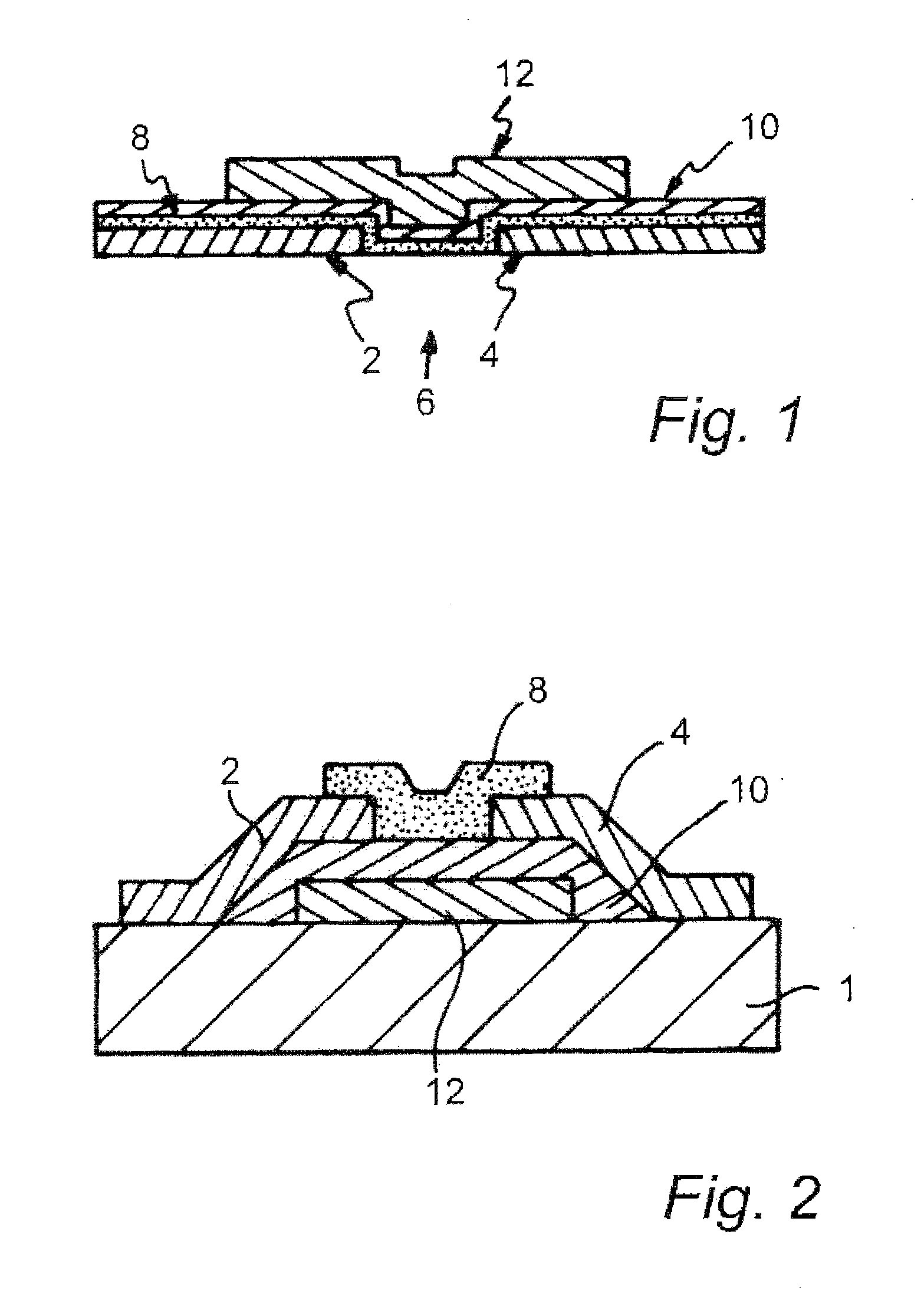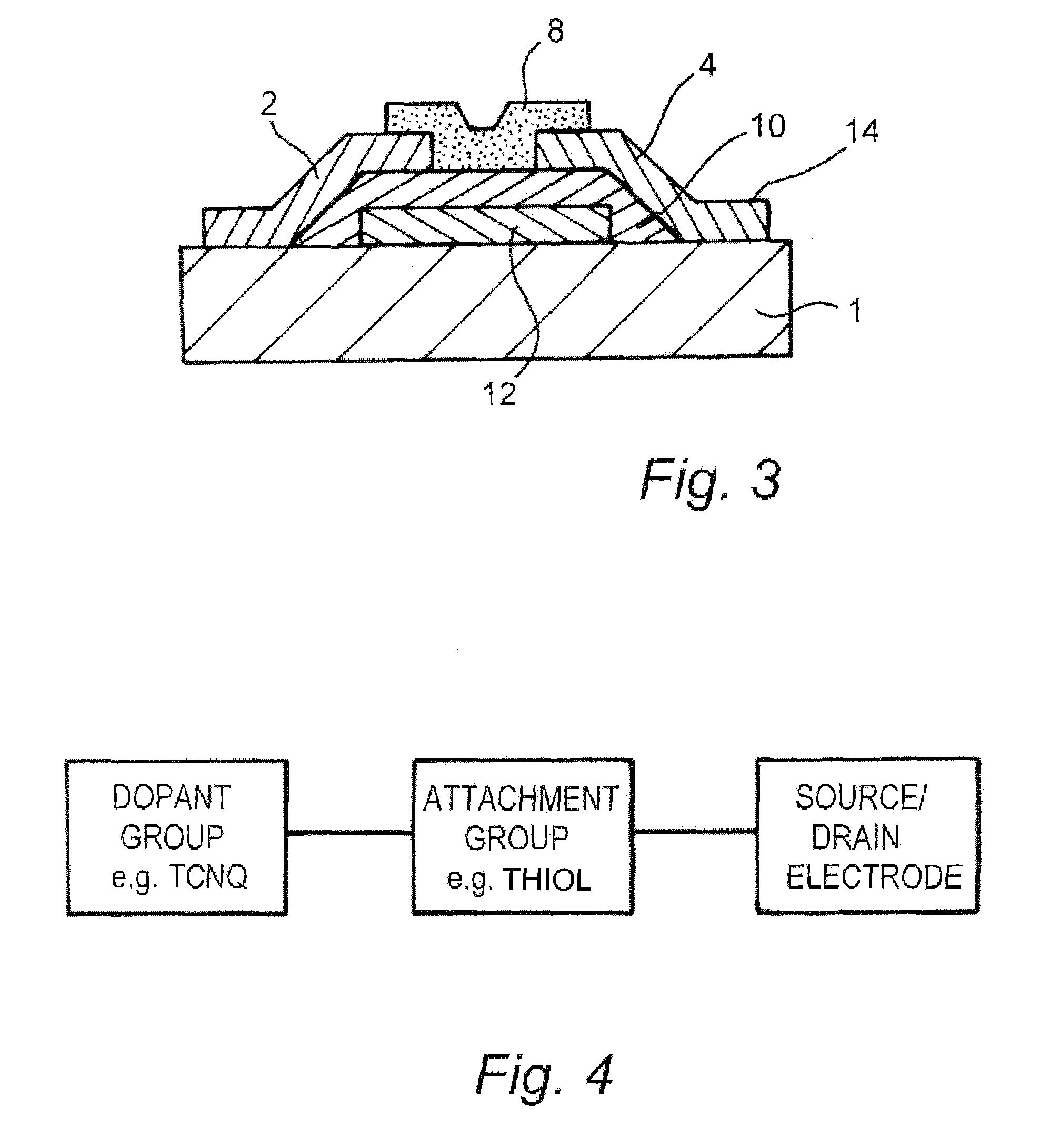Organic Thin Film Transistors, Organic Light-emissive Devices and Organic Light-emissive Displays
- Summary
- Abstract
- Description
- Claims
- Application Information
AI Technical Summary
Benefits of technology
Problems solved by technology
Method used
Image
Examples
Embodiment Construction
[0066]FIG. 3 shows a bottom-gate organic thin film transistor according to an embodiment of the present invention. The structure is similar to the prior art arrangement shown in FIG. 2 and for clarity like reference numerals have been used for like parts. The key difference of the arrangement shown in FIG. 3 is that the source and drain electrodes 2, 4 have disposed thereon a thin self-assembled layer of a material 14 comprising a dopant moiety for chemically doping the organic semi-conductive material by accepting or donating charge and a separate attachment moiety bonded to the dopant moiety and the source and drain electrodes.
[0067]A schematic diagram of the self-assembled layer 14 is illustrated in FIG. 4. For the example of gold or silver source-drain material, a dopant with a thiol attachment group could be used. A typical dopant molecule would include TCNQ, or F4TCNQ which has a deeper LUMO and is a more effective dopant (electron acceptor) with typical OSC materials.
[0068]Th...
PUM
 Login to View More
Login to View More Abstract
Description
Claims
Application Information
 Login to View More
Login to View More - R&D
- Intellectual Property
- Life Sciences
- Materials
- Tech Scout
- Unparalleled Data Quality
- Higher Quality Content
- 60% Fewer Hallucinations
Browse by: Latest US Patents, China's latest patents, Technical Efficacy Thesaurus, Application Domain, Technology Topic, Popular Technical Reports.
© 2025 PatSnap. All rights reserved.Legal|Privacy policy|Modern Slavery Act Transparency Statement|Sitemap|About US| Contact US: help@patsnap.com



